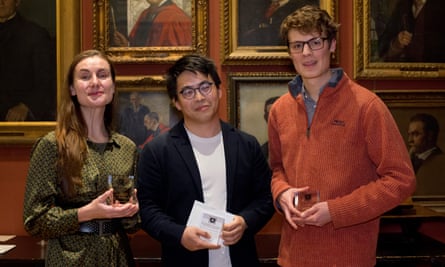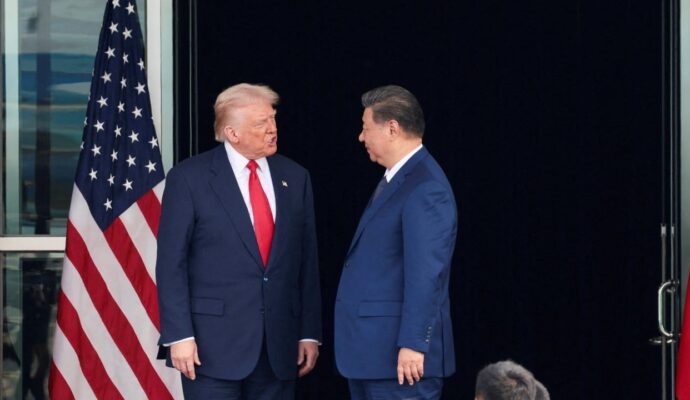Luke Hallam is a writer and editor based in Cambridge. He is a senior editor at Persuasion, an online magazine of ideas and current affairs
Perhat Tursun, a controversial and highly acclaimed Uyghur writer, vanished in 2018. He is reportedly enduring a 16-year sentence in a Chinese prison, just one of the many victims of the Communist party’s genocidal campaign against Uyghurs. We don’t know the crime he is accused of, nor the conditions in which he is being kept. Sadly, these circumstances are not unusual: an estimated 1 million Uyghurs in China’s north-west Xinjiang region have been “disappeared” in similar fashion since 2017.
But unlike many victims of the Chinese government, Tursun’s voice lingers on in his poems and books, the most recent of which, the 136-page novel The Backstreets, was published in translation by Columbia University Press in September 2022. It is the first book by a Uyghur writer ever to appear in English.
The Backstreets is narrated by an impoverished Uyghur office worker wandering the Chinese city of Urumqi in search of a place to stay for the night. He encounters many of the city’s residents, none of whom wants to talk to him. The narrator, in turn, is resentful towards those he meets and considers them to be uncanny and strangely insubstantial, like ghosts. Throughout, it’s unclear where exactly the narrator (or the novel) is heading – until the final pages, when the origin of much of the narrator’s mental anguish is disclosed.
Is The Backstreets a novel about the plight of the Uyghurs, as many are claiming? Yes and no. It is set in the early 1990s, well before the current crackdown. But as co-translator Darren Byler notes in the book’s introduction, “evictions, land seizures, police brutality, and religious oppression” were well under way in Xinjiang at that time and the novel’s dark, experimental style is partly a response to this campaign of oppression.
Sometimes, this is explicit: in an early scene, the narrator overhears a Mandarin speaker furiously muttering: “Chop the people from the Six Cities” (a reference to the Uyghurs’ ancestral homeland). More often, however, it is conveyed through haunting simile: Urumqi’s night-illuminated windows are compared with “the spit of a man whose teeth were bleeding”, while the ubiquitous fog is likened to a “virus” capable of penetrating beneath the skin of the city’s inhabitants. Tursun creates an obliquely oppressive aura – always present, yet strangely delocalised – which packs an impressive emotional punch far greater than the sum of its parts. From a western perspective, it is a refreshing antidote to the autofiction novels that have become popular in recent years, with their tendency towards literalness and a flat, confessional style.
Particularly striking is Tursun’s ability to produce an intense portrait of his protagonist’s mental life, most notably the trauma caused by the narrator’s tyrannical father. As a child, the narrator’s father forced him to do sums in his head; as an adult, he continues to perform mental calculations constantly, totting up the numbers he finds on car licence plates or scraps of paper lying on the street. “Maybe my soul had led me to this place because of the desire to become one with the countless numbers,” he wonders.

There is evidence that Tursun is employing a very precise account of trauma in these scenes. Byler’s introduction tells us that Tursun read Sigmund Freud, so it’s plausible that the narrator’s compulsive mental arithmetic is inspired by Freud’s description of repetitive compulsion as a way of working through trauma. At the same time, the traumatic father-son relationship is a metaphor for the oppression of the Uyghurs by the Communist party, as in a flashback scene when his father’s imposing shadow reminds the narrator of the portrait of Chairman Mao hanging on the wall of the family home.
But it would be a mistake to label Tursun as simply a political novelist. The book is an artistic labour of love; an endnote tells us it was composed and revised over 25 years between 1990 and 2015. As a result, every sentence feels painstakingly crafted. Details in the first 10 pages preempt the action that takes place in the final 10.
Given its author’s disappearance, The Backstreets will inevitably be received as a totem to the Uyghurs, first and foremost. It is that. But it is also more: a rare book that stands out because of the oppressive intensity of its narrative style, one reminiscent of the modernist writers (Dostoevsky, Camus, Freud) who, according to Byler, Tursun loves to read. At the same time, it carves out a distinctive voice that is uniquely bleak and beautiful. What can we do, confronted with writing as urgent as this? Two good places to start: raise awareness about what’s happening to the Uyghurs in China. And hope that Tursun one day writes again.

